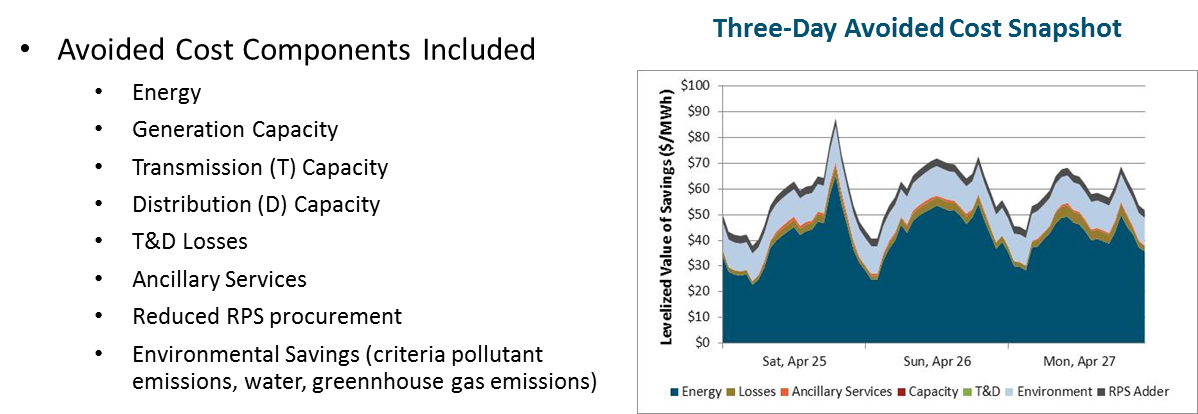The E3 Avoided Cost Model forecasts long-term marginal costs to evaluate the cost-effectiveness of distributed energy resources (DERs) such as energy efficiency, distributed generation, storage, and demand response. It provides robust area- and time-specific cost estimates suitable for regulatory proceedings using public data and transparent forecasting methods. We have continuously published and refined this methodology for nearly 30 years and have applied the Avoided Cost Model methods to regulatory cost-effectiveness evaluations, building energy code design, rate design, cost-shift analysis of net energy metering, and local integrated resource planning.
- In 2020 we developed a consistent set of avoided costs for all of California’s DER program components, including energy efficiency, distributed generation (such as rooftop solar), demand response, and energy storage. The California Public Utilities Commission adopted the forecasts, which it will use to determine the cost-effectiveness of more than $1 billion in programs annually. This project built on a series of long-term avoided cost studies for the CPUC that we have developed and refined since 2004.
- We developed avoided costs for Nevada’s utilities in 2016 and calculated the cost-effectiveness of net energy metering for the state legislature.
- In 2015, we customized the Avoided Cost Model forecasts to be consistent with data and methodologies adopted by the New York Public Service Commission. At the state legislature’s request, we applied those forecasts to a cost-effectiveness evaluation of net energy–metered distributed generation systems.

There are eight avoided cost components in the long-term forecast adopted by the CPUC. The graph illustrates a three-day period showing savings for each component.
All Tools


